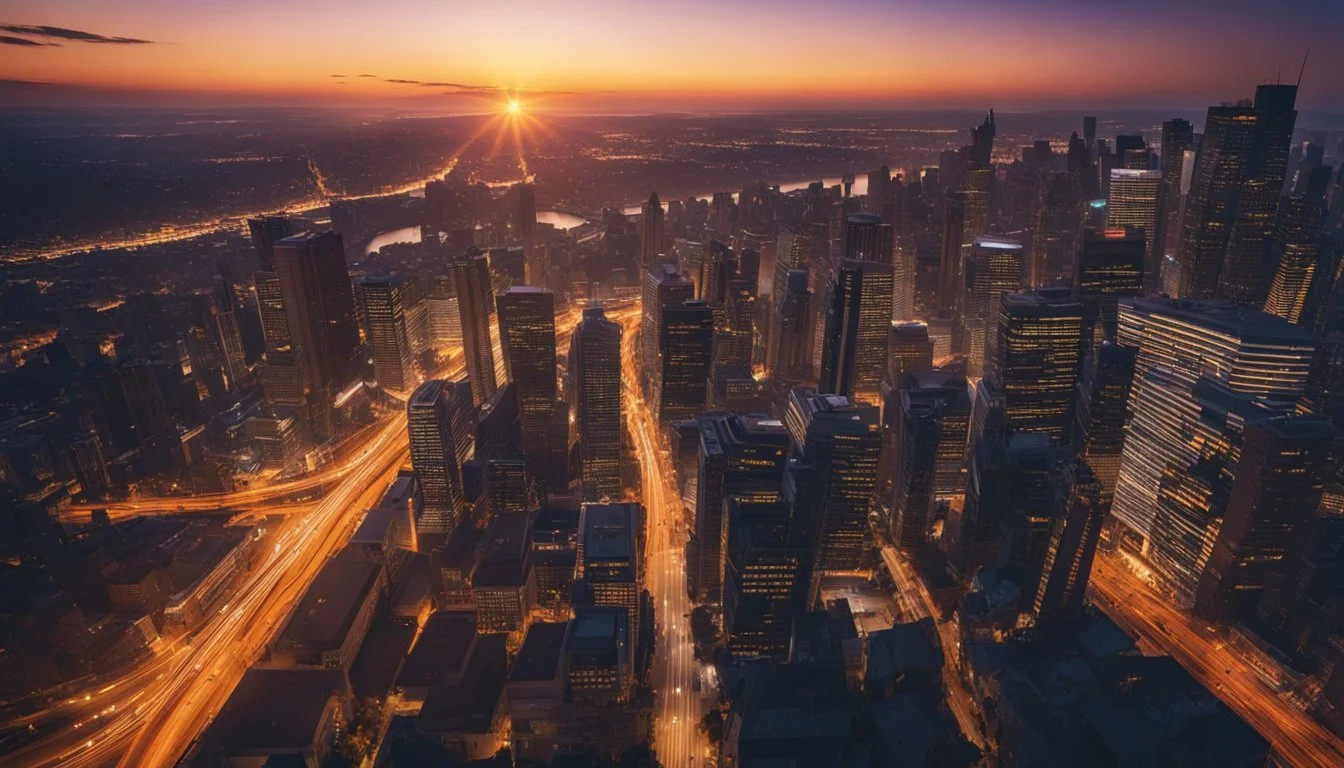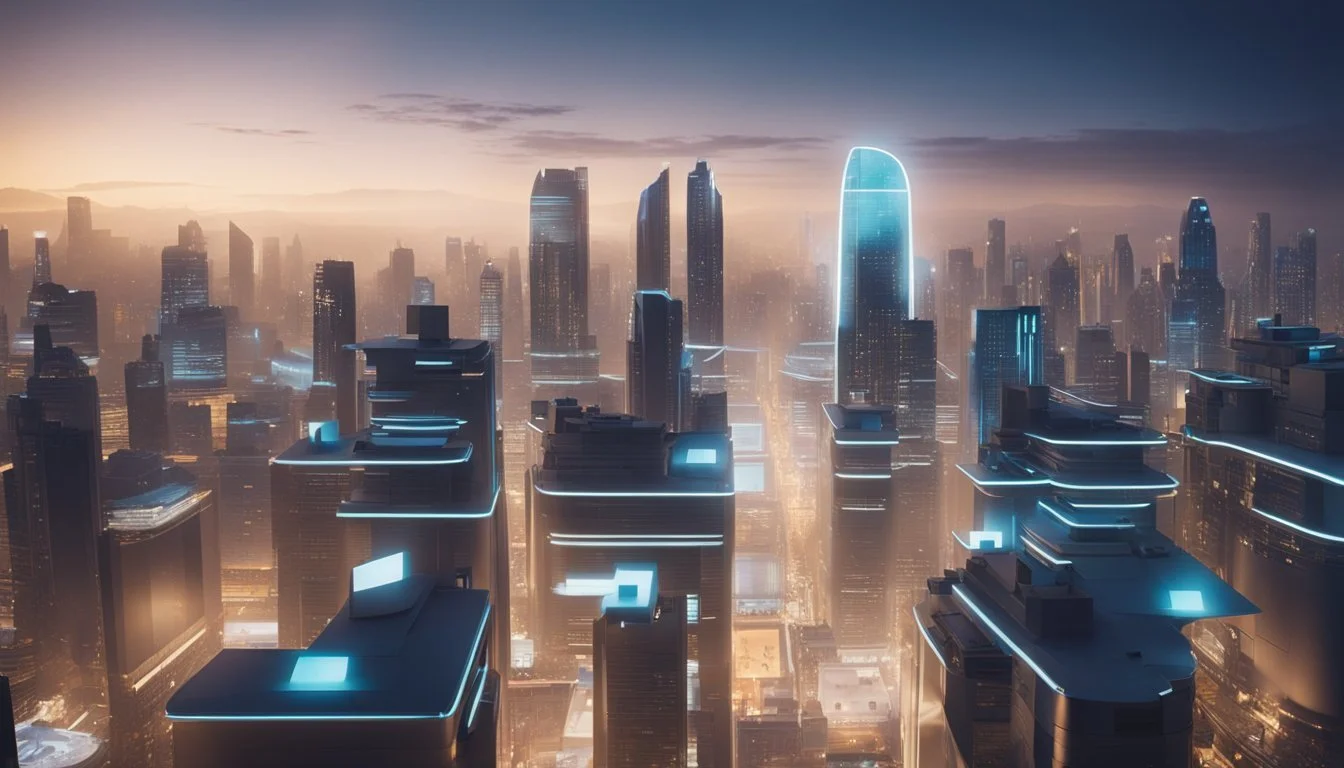The Art of Visual Storytelling
Enhancing Film Narratives with Impact
Visual storytelling in film is a masterful blend of imagery, color, and sound that brings narratives to life in a way that words alone cannot. By skillfully harnessing these elements, filmmakers can transport audiences into immersive worlds and evoke deep emotional responses. This art form engages viewers through the delicate balance of visual composition, camera techniques, and editing, all working together to craft a compelling story.
Film's unique ability to render complex characters and settings allows viewers to connect deeply, making them feel as though they are part of the narrative. The intricate dance between visuals and sound contributes to this connection, emphasizing emotions and themes in a way that resonates powerfully.
Whether it's the use of vibrant hues to signify emotional states or the strategic application of silence to build tension, every choice in visual storytelling serves the narrative. These techniques transform simple stories into memorable cinematic experiences, offering audiences a richer, more engaging way to experience storytelling.
The Fundamentals of Visual Storytelling
To master visual storytelling in film, it is crucial to grasp the basics of visual language, identify key elements of visual narrative, and understand the impact of composition and framing. These principles serve as the foundation for creating compelling and engaging stories.
Understanding Visual Language
Visual language involves the use of images to convey messages and emotions. It utilizes symbols, colors, and visual metaphors to enhance the storytelling process.
Filmmakers must be adept at using color to evoke moods. For instance, blue can denote calmness or melancholy, whereas red can signify passion or danger.
Symbolism should also be a core focus. Objects, actions, or settings in a film can symbolize deeper meanings. A recurring motif can subtly influence a viewer's perception and understanding of the story.
Visual metaphors convey abstract concepts through tangible imagery. For example, a scene showing a character under a heavy downpour can metaphorically represent overwhelming emotions or burdens.
Elements of Visual Narrative
A strong visual narrative contains several elements that work together to tell the story. These include imagery, pacing, and character development.
Imagery is the backbone of visual storytelling. Strong, memorable visuals can make a story resonate with the audience. Think of iconic scenes from classic films — they often rely heavily on powerful images.
Pacing is also essential. Editing rhythm and scene length can dramatically affect how the story flows. Quick cuts can build tension, while longer takes can allow viewers to absorb more detail and emotion.
Character development through visuals is another key aspect. How characters are introduced and how their appearance changes can reveal much about their journey. Costume design, physical expressions, and movements all contribute to this narrative element.
Role of Composition and Framing
Composition and framing determine how each shot looks and feels, significantly enhancing storytelling.
Composition involves arranging visual elements within a frame. The rule of thirds, leading lines, and balance can guide the viewer's eye and highlight key aspects of a scene. Symmetry can create a sense of order, while asymmetrical composition can convey disharmony or tension.
Framing defines what the audience sees and how they see it. Close-ups can reveal intimate details, while wide shots establish the setting and context. The choice of framing influences the viewer's emotional connection to the scene.
Mastering these aspects allows filmmakers to craft scenes that are not just visually appealing but also rich in narrative depth.
Character Development and Arcs
In visual storytelling, strong character development and well-structured arcs are vital. These ensure that the characters are relatable and their journeys compelling, drawing viewers deeper into the story.
Creating Memorable Characters
Memorable characters are the backbone of any compelling narrative. They possess distinct traits, backstories, and personalities that set them apart.
Character details, like quirks or unique physical features, contribute significantly. Visual cues such as clothing, gestures, and expressions provide insight into their inner worlds, making them more believable and relatable. For instance, Sherlock Holmes' deerstalker hat and pipe instantly communicate his eccentric intellectualism.
Careful consideration of these elements helps viewers form a strong emotional connection with the characters presented on screen.
Character Motivations and Goals
Character motivations and goals drive the narrative forward. Understanding what characters want and why they want it allows for more dynamic and engaging stories.
In visual storytelling, these motivations must be clear and visually represented. For example, a character striving to reclaim a lost throne might be shown studying maps and scheming late into the night.
Such goals provide the foundation for conflict and progression, propelling the character's journey and shaping their actions and decisions throughout the narrative.
Character Evolution in Visual Stories
Characters should evolve in response to the challenges they face, adding depth to the narrative. This evolution can be gradual or sudden but must be plausible and reflective of the character's experiences.
Visual symbols such as aging, changes in attire, or shifts in demeanor can illustrate this growth. For instance, a hero beginning their story in humble attire might end it in regal robes, symbolizing their journey and growth.
Tracking this evolution helps viewers appreciate the character's journey and development, making the story more impactful and engaging.
The Power of Cinematography
Cinematography is a vital element of visual storytelling in film. It encompasses various techniques such as camera movements, lighting, and color schemes that profoundly impact the viewer's experience.
Camera Movement and Angle Choices
Camera movement and angles play a pivotal role in shaping the audience's perspective of the narrative. Camera movements like panning, tilting, and tracking can enhance scenes by adding dynamism or emphasizing specific actions. For instance, a tracking shot following a character adds a sense of urgency or importance.
Angle choices, such as low and high angles, influence how a character or scene is perceived. A high angle might make a character seem vulnerable, while a low angle can offer them an imposing appearance. These choices guide the emotional and psychological reactions of the audience.
Lighting Techniques for Mood
Lighting establishes mood and atmosphere, directly affecting how a scene is perceived. High-key lighting, which is bright and even, often conveys cheerful or neutral moments. In contrast, low-key lighting, characterized by deep shadows and high contrast, creates a sense of mystery or tension.
Three-point lighting, using key, fill, and back lights, is a fundamental technique to manipulate light and shadow effectively. The use of motivated lighting, where light sources appear to originate from within the scene, enhances realism. Strategic lighting choices are crucial in evoking specific emotions and setting the tone for a film.
Color Theory in Film
Color theory in film involves the deliberate use of color to convey emotions, themes, and character traits. Warm colors like red, orange, and yellow may evoke emotions such as love, passion, or anger. Conversely, cool colors like blue, green, and purple often represent calmness, sadness, or mystery.
Color palettes also aid in storytelling by creating visual cohesion and highlighting contrasts. For example, a monochromatic palette can convey simplicity, while complementary colors can create visual tension. Filmmakers use color grading in post-production to enhance or alter the color scheme, ensuring consistency and reinforcing the narrative's emotional impact.
Narrative Pacing and Rhythm
Achieving effective narrative pacing and rhythm in film involves careful structuring of scenes, dynamic editing, and precise timing to elicit emotional responses from the audience. These elements work together to maintain engagement and ensure the story unfolds in a compelling manner.
Structuring Scenes for Maximum Impact
The structure of scenes plays a crucial role in maintaining viewer interest. By carefully piecing together high-intensity moments with periods of calm, filmmakers can create a balanced and engaging narrative flow. Climactic scenes should be strategically placed to build tension and anticipation, without overwhelming the audience.
Incorporating varied scene lengths helps in managing the story's rhythm. Short scenes can be used to convey urgency or action, while longer scenes provide depth and character development. It is important to avoid monotonous pacing by mixing these scene types effectively.
Moreover, scenes should be crafted with purposeful openings and closings. An engaging scene begins with a strong hook and ends with a transition that seamlessly moves the story forward.
The Dynamics of Editing
Editing defines how scenes transition, directly influencing the film’s rhythm. Cuts and transitions must be used deliberately to enhance storytelling without disrupting the flow.
Quick cuts can create a sense of frenetic activity, suitable for action sequences or tension-building. In contrast, long takes allow for immersion and introspection, often utilized in dramatic or contemplative scenes. The choice of editing techniques should align with the narrative's tone and emotional requirements.
Complex editing techniques like cross-cutting can enhance the narrative by juxtaposing multiple storylines. This not only adds depth but also maintains viewer interest by shifting perspectives. Each editing decision must serve a clear purpose in the context of the story's overall pacing.
Timing and Its Emotional Effects
Timing is fundamental in evoking emotions. Precise timing in dialogue delivery, action sequences, and music placement can significantly affect the emotional impact of a scene. For instance, pausing at critical dialogue moments can intensify drama and tension.
Music and sound effects are critical in setting the pace. A fast-paced soundtrack can elevate action scenes, whereas a slower, more melancholic score can enhance emotional resonance.
Furthermore, the timing of plot revelations and twists influences audience engagement. Properly timed surprises can rekindle interest and drive the narrative forward. Consistently calibrating timing ensures the film remains emotionally compelling throughout its runtime.
The Role of Sound Design
Sound design plays a pivotal role in enhancing the visual storytelling experience in films. Through music, soundscapes, dialogue, and sound effects, filmmakers can evoke emotions, build atmosphere, and convey deeper meanings that visuals alone cannot achieve.
Music and Soundscapes
Music and soundscapes are integral in setting the tone and emotionally engaging the audience. Music can underscore emotional moments, amplify tension, or provide relief; strategic use of soundscapes creates immersive environments.
For instance, ambient sounds like rain or city noise can make scenes feel more realistic. Composers and sound designers collaborate to ensure the audio aligns perfectly with the visual narrative, reinforcing the story's mood and pace.
Dialogue and Sound Effects
Dialogue is crucial for character development and plot progression. Clear and well-balanced dialogue ensures that viewers can follow the story effectively. Sound Effects add a layer of realism and can also symbolize deeper themes.
For example, foley artists create sounds like footsteps or rustling clothes to match the on-screen action. These detailed effects enrich the viewer's experience, making the film's world more believable and engaging.
Themes and Symbolism
Themes and symbolism are crucial in visual storytelling, enabling filmmakers to communicate complex ideas and emotions. These elements can be woven subtly into a narrative, enhancing depth and resonance.
Conveying Themes Visually
Themes are underlying messages or central ideas in a story. In film, these can be conveyed through various visual elements like color palettes, lighting, and shot composition.
For instance, color can evoke emotions or denote particular themes. Blue hues might suggest melancholy or isolation, while red can indicate passion, danger, or anger. Lighting plays a critical role too; soft, natural light often conveys warmth and safety, whereas harsh, shadowy light can create tension or highlight conflict.
Shot composition is another tool. Close-ups can emphasize personal struggles, while wide shots might illustrate isolation or freedom. Filmmakers carefully select these elements to ensure that the theme resonates with viewers throughout the film.
Using Symbols and Motifs
Symbols and motifs add layers of meaning to a narrative. A symbol is something that represents a larger idea, while a motif is a recurring element that holds significance in the story.
For example, symbols like broken mirrors might represent fractured identities or truths. Birds in flight could symbolize freedom or escape. These symbols can subtly suggest deeper meanings without explicit dialogue.
Motifs, on the other hand, can be objects, colors, or even sounds that appear repeatedly to reinforce a narrative's theme. A recurring clock could underscore themes of time and mortality, while the repeated use of doorways might highlight transitions or choices.
Through these devices, filmmakers create a richer, more engaging narrative experience.
Genre and Visual Styles
The relationship between genre and visual style is crucial in filmmaking. Different genres demand unique visual approaches, while a distinct visual signature can set a filmmaker apart from others.
Adapting Visual Style to Genre
Different genres necessitate specific visual styles to effectively communicate their themes and evoke the desired emotions. For instance, horror films typically use low lighting, shadows, and sharp contrasts to enhance fear and suspense. In contrast, romantic comedies often employ bright, saturated colors and soft lighting to create a light-hearted and cheerful atmosphere.
Using camera techniques is also pivotal. Action films may include rapid cuts and dynamic camera movements to convey excitement. Musicals, on the other hand, often feature wide shots and smooth camera transitions to highlight choreography.
The choice of color palette and set design deeply influences the audience's perception. Sci-fi films might leverage futuristic designs and cold, metallic hues, whereas period dramas opt for historically accurate and detailed settings to immerse viewers in a specific era. Each visual element must be meticulously chosen to align with the genre's requirements.
Creating a Unique Visual Signature
A unique visual signature distinguishes a filmmaker's work and makes it instantly recognizable. This can be achieved through consistent use of specific colors, camera angles, and lighting styles. For instance, Wes Anderson's films are known for their symmetrical compositions and pastel color palettes, creating a quirky and whimsical visual identity.
Filmmakers like Quentin Tarantino utilize specific visual motifs, such as trunk shots or a particular style of dialogue delivery, which become hallmarks of their films. Developing such a signature involves experimentation and a deep understanding of visual storytelling techniques.
Additionally, collaboration with a trusted team, including cinematographers and production designers, ensures a cohesive and unique visual style. Regular collaboration infuses consistency into the visual language, making the filmmaker's work easily identifiable and leaving a lasting impression on audiences.
Technology in Visual Storytelling
Technology has revolutionized visual storytelling in film through advancements in visual effects and the transformative impact of digital cinematography. These technological innovations have enhanced the way stories are told, creating more immersive and engaging cinematic experiences.
Advancements in Visual Effects
The realm of visual effects (VFX) has seen significant progress with the advent of sophisticated software and techniques. Computer-generated imagery (CGI) now enables filmmakers to create scenes and characters that were previously unimaginable.
Mocap (motion capture) technology allows for realistic animation of human and non-human characters, capturing nuanced body movements and facial expressions. Green screens and chroma keying techniques have become essential tools for creating impressive backgrounds and environments that transport viewers to different worlds.
Additionally, new real-time rendering engines, like Unreal Engine, have revolutionized the process by allowing for near-instantaneous visualization, thus reducing production time and costs. Utilizing these tools, filmmakers can manipulate and perfect their visual narratives with incredible precision and creativity.
The Impact of Digital Cinematography
Digital cinematography has largely replaced traditional film, offering greater flexibility and efficiency. High-resolution digital cameras have elevated the quality of film production, enabling filmmakers to capture stunning visual detail and clarity.
Advanced post-production software provides extensive opportunities for editing and manipulating footage, allowing for seamless integration of visual effects. Innovations like drone cinematography have expanded the potential for dynamic and aerial shots, providing new perspectives and enhancing the storytelling process.
Moreover, the rise of digital intermediates (DIs) has improved color grading capabilities, ensuring that the final product reflects the intended visual tone and mood. Digital workflows also enable faster distribution and access to films, enhancing their reach and impact on global audiences.
Ethics and Responsibility
Ethical storytelling in film demands a commitment to honesty and integrity. Filmmakers must ensure that their narratives avoid exploitation and sensationalism. This fosters an emotional connection with audiences while respecting the subjects of their stories.
Transparency is crucial. Filmmakers should disclose any potential biases and strive for accuracy. Misrepresentation can damage trust and credibility.
Informed consent is another pillar. Subjects should be fully aware of the purpose and potential impact of the film. This respects their autonomy and dignity.
Balancing creativity with responsibility is key. Artistic freedom should not come at the expense of truth or ethical standards.
Filmmakers must also be mindful of cultural sensitivity. Stereotypes and cultural appropriation undermine the authenticity of the narrative and can cause harm.
Resources and platforms used should align with ethical standards. Choosing tools that support responsible storytelling is essential.
Maintaining ethical practices contributes to the sustainability of the film industry. It sets a benchmark for future creators and reinforces the value of storytelling as a force for good.
Collaborative Aspects of Production
The creation of compelling visual narratives in film is a team effort that requires the expertise of multiple professionals. Directors, writers, cinematographers, and editors work in unison to bring the story to life.
Directors guide the vision and ensure all elements align with the narrative goals. They collaborate closely with writers who develop the script, creating the foundation for the story.
Cinematographers play a pivotal role. Their ability to capture the right angles, lighting, and movements enhances the visual appeal. Meanwhile, editors stitch together the footage, refining the pacing and continuity.
Team communication is key in production. Regular meetings and discussions ensure all team members are on the same page, fostering a coherent and unified vision.
Occasionally, producers step in to oversee the project, managing budgets and schedules. This ensures that the creative vision stays practical and achievable.
Actors and set designers also contribute significantly. They bring the characters and settings to life, adding depth to the visual storytelling narrative. Their input is valuable in creating an immersive experience for the audience.
Through the seamless collaboration of these roles, each aspect of the film supports the story, crafting a compelling and engaging narrative.
Case Studies in Visual Storytelling
Examining notable examples of visual storytelling in film can provide valuable insights into the techniques and decisions that create compelling narratives. This section highlights analysis of iconic scenes and impactful indie film breakdowns.
Analysis of Iconic Film Scenes
"The Shawshank Redemption" - Rooftop Scene: The scene where Andy Dufresne offers to help a guard with his taxes in exchange for beer for his fellow inmates is a masterclass in visual storytelling. The contrast between the oppressive prison environment and the brief moment of freedom and camaraderie among the inmates is highlighted through strategic camera angles and natural lighting.
"Inception" - Spinning Top Ending: The final scene of Inception, where the totem spins ambiguously, leaves viewers questioning reality. The use of tight framing and focused sound design draws attention just to the spinning top, symbolizing the thin line between dreams and reality. This visual choice makes the scene memorable and keeps audiences engaged even after the film ends.
Impactful Indie Film Breakdowns
"Moonlight" - Beach Scene: The tender moment between two teenagers on the beach in Moonlight highlights the power of subtle visual cues. The use of dim lighting, close-ups, and slow pacing creates an intimate atmosphere. These elements invite viewers into the personal and emotional landscape of the characters, making their connection feel palpable.
"Parasite" - Basement Reveal: In Parasite, the shocking basement discovery is made impactful through careful pacing, lighting, and set design. The dim, claustrophobic setting creates a sense of dread. The contrast between the opulent house above and the dark, hidden basement below visually represents the film's commentary on class disparity.
These case studies illustrate how careful attention to visual elements can enhance storytelling in both mainstream and independent films. Through strategic use of lighting, camera angles, and sound, filmmakers are able to craft scenes that resonate deeply with their audiences.
Future Trends in Storytelling
Innovative technologies and platforms are shaping how narratives are created and consumed, offering new dimensions for storytelling. From immersive technologies to cross-media storytelling, the landscape is continually evolving.
Emerging Technologies and Narratives
Virtual reality (VR) and augmented reality (AR) are at the forefront of transforming storytelling. These technologies enable audiences to engage with narratives in immersive and interactive ways. VR allows users to step into the story, experiencing events from the inside.
Artificial intelligence (AI) also plays a significant role. AI-generated content, from scripts to entire scenes, is becoming more sophisticated. AI can analyze audience preferences and tailor narratives to maximize engagement.
Blockchain technology introduces new ways for creators to protect their intellectual property. It provides a secure and transparent method for managing digital rights and distribution.
Cross-Media Storytelling Possibilities
Cross-media storytelling expands narratives across multiple platforms, offering different entry points and experiences for audiences. A story might begin in a film, continue in a comic book, and conclude in an interactive game. This approach maximizes engagement by leveraging the unique strengths of each medium.
Transmedia storytelling requires careful planning to ensure a cohesive narrative. Each platform should add value and depth to the story rather than merely repeating content. Collaboration among creators across different media is essential for success.
The rise of social media and streaming services further enhances cross-media storytelling. Interactive and real-time elements on these platforms provide dynamic ways to engage the audience and extend the storytelling experience.





